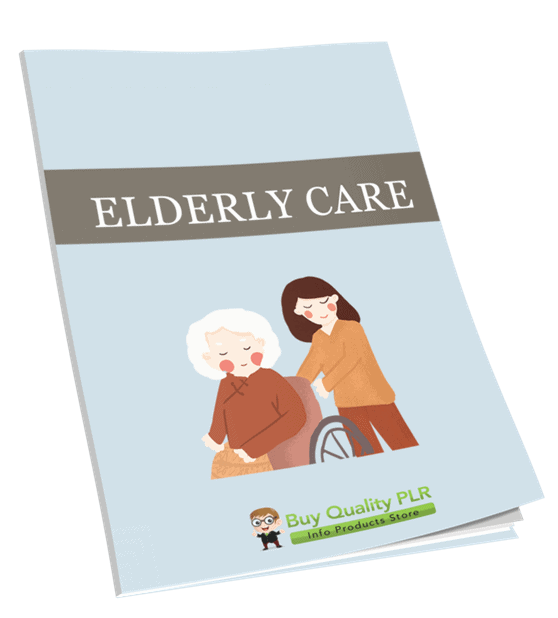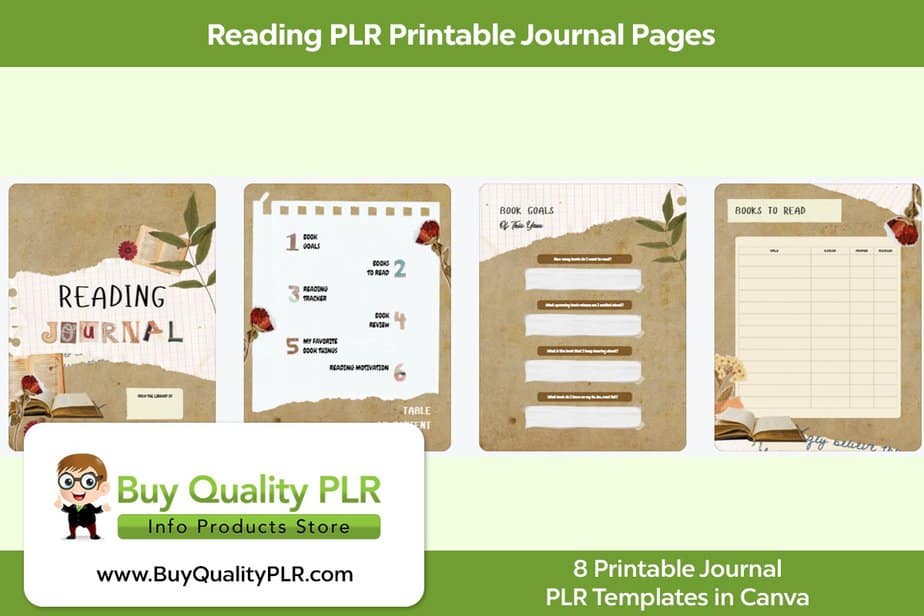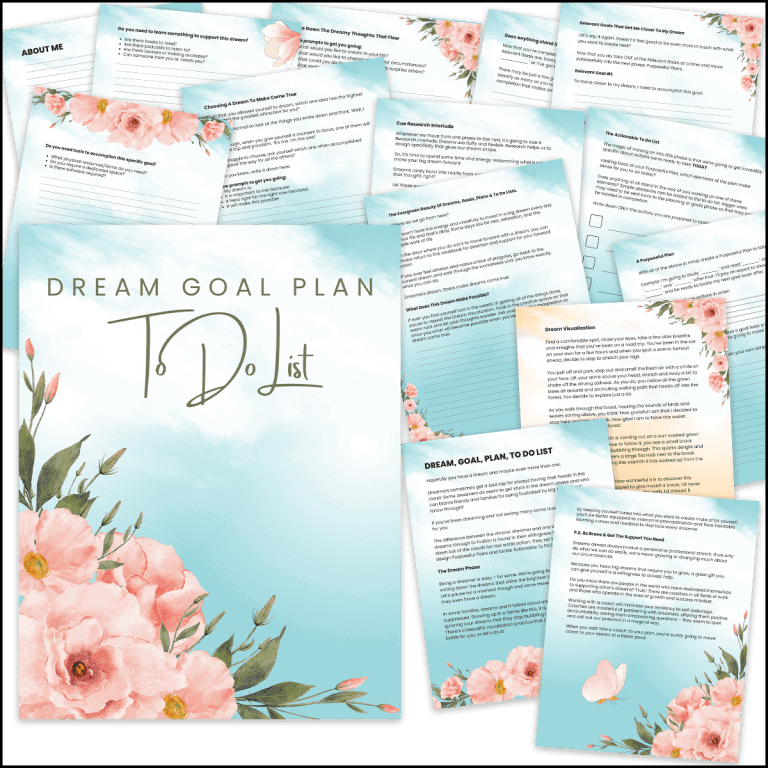
Elderly Care PLR Course 25k Words
in Health PLR , Health PLR eBooks , PLR Checklists , PLR eBooks , PLR eCourses , PLR List Building Reports , Premium PLR , Premium PLR eBooks , Premium White Label Brandable PLR Coaching Courses , Private Label Rights ProductsChoose Your Desired Option(s)
has been added to your cart!
have been added to your cart!
#elderlycare #plrcourse #seniorwellness #caregivingresources #healthcareessentials #plrcontent #seniorsupport #caregiverguides #healthforseniors
Empower Caregivers to Provide Compassionate and Professional Elderly Care!
Caring for elderly individuals requires patience, knowledge, and a deep sense of empathy. Whether you’re a professional caregiver or a family member stepping into this crucial role, “Elderly Care: A Comprehensive Guide for Caregivers” is your ultimate resource to provide the best care possible. This PLR course equips you with step-by-step instructions, practical skills, and compassionate approaches to ensure the well-being and dignity of seniors.
Presenting…
Elderly Care PLR Course 25k Words
What’s Inside the Elderly Care Course?
Module 1: Understanding the Needs of the Elderly
Care starts with understanding. This module focuses on the physical, emotional, and psychological needs of seniors.
- Recognizing Common Physical Changes: Learn about mobility challenges, vision and hearing loss, and chronic health conditions.
- Identifying Emotional Needs: Discover how to support seniors experiencing loneliness, anxiety, or depression.
- Assisting with Daily Activities: Master the art of helping with eating, bathing, and grooming while preserving dignity.
- Tailoring Care: Customize your approach based on each individual’s preferences, routines, and specific needs.
Module 2: Effective Communication with the Elderly
Communication is key to building trust and providing exceptional care.
- Using Clear and Simple Language: Learn to communicate effectively with seniors who may have hearing or cognitive challenges.
- Non-Verbal Communication: Understand the power of body language, facial expressions, and tone of voice.
- Active Listening Skills: Make seniors feel heard and valued by practicing active listening.
- Handling Difficult Conversations: Approach sensitive topics like health, finances, and end-of-life planning with compassion and patience.
Module 3: Personal Care and Hygiene
Ensure seniors feel comfortable, clean, and cared for.
- Bathing and Grooming: Learn techniques to assist with bathing and grooming respectfully.
- Oral Care: Support dental hygiene, including brushing and managing dentures, to promote overall health.
- Managing Incontinence: Discover sensitive ways to address incontinence and maintain hygiene.
- Maintaining Skin Care: Prevent skin issues like dryness or pressure sores with effective skincare routines.
Module 4: Safety and Fall Prevention
Keep seniors safe and secure in their living environment.
- Identifying Fall Hazards: Spot risks in the home and eliminate potential dangers.
- Installing Safety Features: Learn about grab bars, non-slip mats, and bed rails to enhance safety.
- Safe Mobility Techniques: Teach safe methods for getting up, walking, and using mobility aids.
- Emergency Preparedness: Ensure seniors are equipped to handle emergencies with ease.
Module 5: Promoting Mental and Emotional Well-Being
Mental health is just as important as physical care.
- Encouraging Social Interaction: Combat loneliness by fostering connections with family, friends, and community groups.
- Providing Mental Stimulation: Engage seniors with puzzles, games, or reading to keep their minds sharp.
- Respecting Independence: Empower seniors to maintain autonomy by supporting tasks they can still manage.
- Creating a Positive Environment: Use music, aromatherapy, and uplifting activities to promote relaxation and happiness.
Who Is This Course For?
- Professional Caregivers: Elevate your skills and provide top-tier care with this detailed training.
- Family Caregivers: Gain confidence and practical knowledge to care for your elderly loved ones.
- Healthcare Providers: Use this resource to train staff and improve patient outcomes.
- Content Creators: Leverage this course to build authority in the caregiving or senior wellness niche.
What’s Included in the PLR Package?
- Elderly Care PLR Course (23,261 words): Comprehensive, step-by-step modules covering all aspects of elderly care.
- Checklist (666 words): A detailed guide to ensure nothing is overlooked in caregiving routines.
- FAQs (1,347 words): Answers to common questions about elderly care, addressing both caregivers and seniors.
- Sales Page (869 words): Professionally written copy to help you sell this course effortlessly.
How to Profit from This Course
Here are ways to maximize the value of this high-quality PLR product:
- Sell It as a Standalone Course
Market it as an invaluable guide for caregivers, pricing it at $47–$97. - Bundle It with Other Wellness Products
Combine it with health, nutrition, or mobility resources for a premium caregiving package. - Create a Membership Program
Offer the course as part of a subscription service for ongoing caregiver training and support. - Break It into Smaller Products
Repurpose the modules into bite-sized eBooks, blog series, or video content to target specific caregiving aspects. - Host Workshops or Webinars
Use the course content to deliver live or recorded training sessions to your audience. - Build Brand Authority
Offer excerpts as free lead magnets to grow your audience and establish trust in the caregiving community.
Why Choose This PLR Course?
- Expertly Written Content: Professionally crafted with valuable insights and actionable advice.
- Timeless Demand: As the population ages, the need for quality caregiving resources continues to grow.
- Fully Customizable: Edit and brand it to fit your voice and target audience seamlessly.
- High ROI Potential: Ready-to-use material saves you time and enables immediate monetization.
Special Offer: Get the Elderly Care PLR Course for Just $14.99!
This is your chance to own a premium product in a high-demand niche. Whether you’re looking to educate, inspire, or monetize, this course is your key to success.
has been added to your cart!
have been added to your cart!
Here A Sample of Elderly Care PLR Course
This course is designed to provide caregivers with the knowledge, skills, and practical steps necessary to provide the best care for elderly individuals. Whether you’re a professional caregiver or a family member taking on the role, this training will guide you through the essential aspects of elderly care, helping you ensure that seniors receive the respect, attention, and comfort they deserve.
Module 1: Understanding the Needs of the Elderly
In this module, we’ll focus on the physical, emotional, and psychological needs of the elderly, and how to address them with compassion.
Step 1: Recognizing Common Physical Changes in Aging
As we age, our bodies naturally undergo a variety of changes. Understanding these common physical changes is crucial for caregivers, as it allows them to provide more effective and compassionate care while setting realistic expectations for what elderly individuals can and cannot do. This step is not just about recognizing visible changes; it also involves understanding the underlying physical and medical reasons behind these changes, so caregivers can offer appropriate assistance and support.
1.1. Reduced Mobility and Muscle Weakness
One of the most noticeable changes in the elderly is reduced mobility. As people age, muscle mass decreases, and joints become stiffer and less flexible. This can make it difficult for seniors to move around freely or perform tasks that once were simple, such as walking, climbing stairs, or standing for long periods.
Why does this happen?
- Muscle Atrophy: Age-related muscle loss, known as sarcopenia, leads to weaker muscles, which can make movement more difficult and increase the risk of falls.
- Joint Stiffness: Over time, the cartilage that cushions joints can wear down, causing pain and limiting range of motion. Conditions like osteoarthritis are common among older adults.
- Decreased Bone Density: Osteoporosis, a condition where bones become brittle and fragile, is also prevalent in the elderly, making fractures more likely.
Caregiver Considerations:
- Help the elderly individual with activities that require physical effort, such as getting in and out of bed or standing up from a chair.
- Modify their living environment by installing grab bars and handrails in key areas like the bathroom and hallway.
- Encourage light physical activity, such as stretching or walking, to maintain muscle strength and improve flexibility. Always ensure that exercises are tailored to the individual’s abilities.
1.2. Hearing Loss
Hearing loss is one of the most common sensory changes associated with aging. It may occur gradually, making it hard for seniors to notice, but it can significantly impact communication, social interaction, and quality of life.
Why does this happen?
- Presbycusis: Age-related hearing loss, also known as presbycusis, affects the inner ear and auditory nerve. The hair cells in the inner ear that transmit sound signals to the brain gradually deteriorate, reducing hearing sensitivity.
- Damage from Noise Exposure: Prolonged exposure to loud noises over a lifetime can also contribute to hearing loss.
- Changes in the Ear Structure: The eardrum and ear canal may thicken, reducing the efficiency of sound transmission.
Caregiver Considerations:
- Be patient when speaking and ensure that the individual can hear you clearly. Speak slowly and at a normal pitch; avoid shouting, as this can distort speech.
- Ensure that hearing aids, if used, are in good condition and correctly fitted.
- Use visual cues, such as gestures, written instructions, or pictures, to support communication.
- If necessary, arrange for a hearing test with an audiologist to assess the extent of hearing loss and explore options for treatment.
1.3. Vision Impairment
Vision changes are another common physical change in aging. Many elderly individuals experience difficulties with sight, whether it’s from normal age-related changes or specific medical conditions.
Why does this happen?
- Presbyopia: This condition occurs when the lens of the eye becomes less flexible, making it harder to focus on close-up objects, such as reading materials.
- Cataracts: A cataract is the clouding of the eye’s natural lens, which can cause blurry vision and, in severe cases, blindness if left untreated.
- Macular Degeneration: Age-related macular degeneration (AMD) affects the central part of the retina, causing vision loss in the center of the field of view.
- Glaucoma: This condition involves increased pressure within the eye, potentially leading to blindness if not managed properly.
Caregiver Considerations:
- Ensure that the elderly individual has adequate lighting in their living space to reduce the risk of falls and improve visibility.
- Encourage regular eye exams to detect and treat issues like cataracts or glaucoma early.
- Assist with tasks that require good vision, such as reading or navigating unfamiliar spaces. You may need to use larger print materials, contrasting colors, or assistive devices like magnifying glasses.
- Be mindful of their limited ability to detect potential hazards in their environment, such as uneven flooring or obstacles, and help remove these risks.
1.4. Chronic Health Conditions
Many elderly individuals live with one or more chronic health conditions, such as hypertension, diabetes, heart disease, arthritis, or respiratory disorders. These conditions require ongoing management and can significantly impact an individual’s overall health and functioning.
Why does this happen?
- Decline in Organ Function: As we age, the function of organs like the heart, kidneys, and lungs can gradually decline, leading to conditions such as heart disease, kidney disease, or chronic obstructive pulmonary disease (COPD).
- Chronic Inflammation: Long-term inflammation in the body can contribute to various health issues, including arthritis, cardiovascular disease, and diabetes.
- Weakened Immune System: The immune system tends to become less efficient with age, making seniors more susceptible to infections and illnesses.
Caregiver Considerations:
- Help manage medications by ensuring they are taken at the correct times and dosages. Many elderly individuals take multiple medications, so it’s essential to keep track of them to avoid complications.
- Monitor symptoms related to chronic conditions. For example, watch for signs of swelling in the legs (which could indicate heart or kidney problems) or unusual changes in blood sugar levels for diabetics.
- Encourage a healthy diet that accommodates their chronic conditions. For instance, those with hypertension may need a low-sodium diet, while someone with diabetes needs to manage carbohydrate intake.
- Make regular visits to healthcare professionals, ensuring that the elderly person receives the necessary treatments and checkups for their chronic conditions.
1.5. Decreased Cognitive Function
While not strictly a physical change, cognitive decline is another factor that affects elderly individuals. Cognitive impairment, including conditions like dementia and Alzheimer’s disease, is common in older adults and can affect memory, reasoning, and decision-making.
Why does this happen?
- Neurodegenerative Diseases: Conditions such as Alzheimer’s disease or Parkinson’s disease lead to the progressive degeneration of the brain, affecting memory, thinking, and behavior.
- Vascular Dementia: Caused by reduced blood flow to the brain, often due to strokes or mini-strokes, this condition can impair memory and cognitive abilities.
- Normal Age-Related Cognitive Decline: Some degree of cognitive slowing is a natural part of aging, though it is less severe than dementia.
Caregiver Considerations:
- Provide a calm and supportive environment to reduce confusion and anxiety.
- Use memory aids such as calendars, lists, or electronic reminders to help with daily tasks.
- Maintain consistent routines to provide structure and reassurance.
- Seek professional support if the elderly individual shows signs of significant cognitive decline, as early intervention can help manage symptoms.
Conclusion
Recognizing these common physical changes in aging is essential for caregivers, whether they are family members or professionals. By understanding these changes, caregivers can set realistic expectations, anticipate challenges, and offer appropriate support. It is important to always approach elderly care with patience, compassion, and respect for the individual’s dignity. Knowing what physical changes to expect allows you to provide the best possible care while helping seniors maintain a sense of independence and well-being.Bottom of Form
Step 2: Identifying Emotional and Psychological Needs
Elderly individuals often face emotional and psychological challenges that can be overlooked or misunderstood. As a caregiver, it is vital to be able to recognize the signs of emotional distress and psychological conditions, such as loneliness, depression, and anxiety. These conditions are prevalent in the aging population and can severely affect their overall well-being, quality of life, and even physical health. In this step, we will explore the signs of emotional and psychological issues in the elderly, and provide effective ways to offer emotional support.
2.1. Recognizing Signs of Loneliness
Loneliness is one of the most common emotional issues among older adults, especially those who live alone, have lost close family members or friends, or are facing physical limitations. Loneliness can have significant negative effects on mental health, leading to feelings of isolation, sadness, and a decreased desire to engage in daily activities.
Why does loneliness happen?
- Loss of loved ones: As individuals age, they may lose spouses, friends, or family members, leading to feelings of isolation.
- Physical limitations: Reduced mobility or chronic illness can limit the elderly person’s ability to participate in social activities, causing them to withdraw.
- Lack of social support: Seniors may find it harder to maintain social connections, especially if they live far from family or in environments where social interaction is limited.
Signs of loneliness:
- Withdrawal from social activities: The elderly person may stop participating in social events, hobbies, or activities they once enjoyed.
- Talking about feeling isolated: They may directly express feelings of loneliness or make comments like “I don’t have anyone to talk to” or “I don’t feel needed.”
- Increased reliance on digital devices or media: Loneliness may lead to excessive use of television, social media, or online activities as a way to fill the void.
- Changes in behavior or mood: They may become more anxious, withdrawn, or irritable.
Caregiver Considerations:
- Offer companionship: Engage in regular conversations, listen to their stories, and share experiences. A friendly, empathetic ear can make a world of difference.
- Encourage social interaction: Help them stay connected with family and friends through phone calls, video chats, or physical visits if possible. Facilitating participation in social groups or community activities can also help.
- Create a supportive environment: Encourage involvement in hobbies, crafts, or volunteering that provide a sense of purpose and connection to others.
- Monitor emotional changes: Regularly check in on their emotional health. If loneliness seems to persist, it may indicate a deeper emotional or psychological issue that needs attention.
2.2. Recognizing Signs of Depression
Depression is a common mental health issue in the elderly, but it is often underdiagnosed or mistaken for other conditions, such as fatigue or physical illness. Depression can have a significant impact on the elderly’s daily life, reducing their ability to care for themselves, affecting their appetite and sleep, and impairing their ability to engage in meaningful activities.
Why does depression happen?
- Biological changes: As people age, changes in brain chemistry and hormone levels can contribute to depression. Medical conditions, medications, and neurological changes may also play a role.
- Loss of independence: The inability to perform daily activities independently can lead to feelings of helplessness and low self-worth.
- Grief and loss: The elderly often experience the loss of close friends, family members, or even their pets, leading to emotional distress.
- Chronic illness or pain: Long-term health problems can contribute to feelings of sadness, hopelessness, or despair.
Signs of depression:
- Persistent sadness or hopelessness: They may frequently express feelings of sadness, worthlessness, or hopelessness, saying things like, “I don’t feel happy anymore” or “Life isn’t worth living.”
- Loss of interest in activities: Activities they once enjoyed may no longer bring them pleasure or interest. This includes withdrawing from family gatherings or hobbies.
- Changes in sleep patterns: Depression often leads to insomnia or excessive sleeping (hypersomnia).
- Changes in appetite or weight: Either a noticeable increase or decrease in appetite may occur, leading to significant weight gain or loss.
- Physical symptoms: Complaints of chronic pain, fatigue, or digestive problems without a clear medical cause.
- Thoughts of death or self-harm: In severe cases, depression can lead to suicidal thoughts. This is especially important to watch for in elderly individuals.
Caregiver Considerations:
- Offer emotional support: Let them know they are valued and loved. Reassure them that it’s okay to feel sad and encourage them to talk about their feelings. Avoid dismissing their emotions as just “a part of getting old.”
- Encourage physical activity: Regular exercise, such as walking or gentle stretching, can help reduce the symptoms of depression by releasing endorphins, which improve mood.
- Facilitate professional help: Encourage them to seek help from a healthcare provider, such as a therapist or counselor. Medication or psychotherapy may be necessary for managing depression effectively.
- Monitor safety: If there are signs of suicidal thoughts or self-harm, immediate intervention is required. Reach out to a mental health professional or a crisis hotline for guidance.
2.3. Recognizing Signs of Anxiety
Anxiety is another psychological challenge common in the elderly. It can manifest as excessive worry, fear, or nervousness about various aspects of life, such as health, finances, or relationships. Anxiety can affect the elderly’s ability to function and impact their quality of life, making it essential to recognize the signs and provide support.
Why does anxiety happen?
- Health concerns: Anxiety is often related to the fear of illness, death, or the future. Seniors with chronic health conditions or those who are dealing with new diagnoses may experience heightened anxiety.
- Cognitive changes: Fear or anxiety about cognitive decline, such as developing dementia or Alzheimer’s disease, is common among the elderly.
- Life changes: Major life transitions, such as retirement, moving to a new home, or losing a spouse, can trigger anxiety.
- Social isolation: As with loneliness, a lack of social interaction can exacerbate feelings of anxiety.
Signs of anxiety:
- Excessive worry or fear: They may express constant concern about things that seem manageable or trivial, such as household chores or their health.
- Physical symptoms: Anxiety can manifest physically, including symptoms like rapid heartbeat, dizziness, difficulty breathing, dry mouth, or muscle tension.
- Restlessness or agitation: The elderly person may seem fidgety, unable to relax, or constantly on edge.
- Avoidance behaviors: They may begin to avoid certain activities or situations that make them feel anxious, such as leaving the house or attending social events.
- Sleep disturbances: Anxiety often leads to trouble falling asleep or staying asleep, contributing to further emotional distress.
Caregiver Considerations:
- Provide reassurance: Offer comfort and a calm presence. Help them understand that their fears are heard, but gently remind them that many of their concerns may be exaggerated or unfounded.
- Teach relaxation techniques: Introduce them to deep breathing, meditation, or gentle yoga exercises. These techniques can help reduce physical tension and calm their mind.
- Encourage social participation: Gently encourage them to engage with others in social situations, as isolation can worsen anxiety.
- Seek professional help: If anxiety becomes severe or interferes with daily life, professional therapy or counseling may be necessary. A healthcare provider can also recommend medication to manage anxiety symptoms.
2.4. Offering Emotional Support: Key Strategies for Caregivers
Once emotional and psychological issues are identified, it’s essential to offer the elderly individual the support they need to cope effectively. Emotional support can improve mental well-being, enhance physical health, and promote a better quality of life.
Key strategies for providing emotional support:
- Active Listening: Be patient and actively listen to their concerns without interrupting. Acknowledge their feelings and validate their experiences.
- Foster a sense of purpose: Encourage them to remain active by suggesting hobbies or volunteer opportunities that give them a sense of accomplishment.
- Establish a routine: Having a structured daily routine can reduce anxiety and provide stability.
- Provide a safe environment: Make sure the elderly individual feels physically and emotionally safe in their environment. This may involve making their home more secure or offering emotional reassurances when they feel vulnerable.
Conclusion
Recognizing and addressing the emotional and psychological needs of the elderly is a critical aspect of caregiving. Loneliness, depression, and anxiety are common among older adults, and understanding the signs and offering timely support can significantly improve their mental health and quality of life. As a caregiver, your empathy, patience, and attentiveness can help create a supportive environment that allows the elderly individual to thrive emotionally, socially, and psychologically. Always approach their emotional needs with understanding and encourage professional help when necessary to ensure they receive the best care possible.
We’re also giving these extra bonuses
Elderly Care – Checklist

Elderly Care – FAQs

Elderly Care – Salespage Content

Package Details:
Word Count: 23 261 Words
Number of Pages: 100
Elderly Care – Bonus Content
Checklist
Word Count: 666 words
FAQs
Word Count: 1347 words
Salespage Content
Word Count: 869 words
Total Word Count: 26 143 Words
Your PLR License Terms
PERMISSIONS: What Can You Do With These Materials?
Sell the content basically as it is (with some minor tweaks to make it “yours”).
If you are going to claim copyright to anything created with this content, then you must substantially change at 75% of the content to distinguish yourself from other licensees.
Break up the content into small portions to sell as individual reports for $10-$20 each.
Bundle the content with other existing content to create larger products for $47-$97 each.
Setup your own membership site with the content and generate monthly residual payments!
Take the content and convert it into a multiple-week “eclass” that you charge $297-$497 to access!
Use the content to create a “physical” product that you sell for premium prices!
Convert it to audios, videos, membership site content and more.
Excerpt and / or edit portions of the content to give away for free as blog posts, reports, etc. to use as lead magnets, incentives and more!
Create your own original product from it, set it up at a site and “flip” the site for megabucks!
RESTRICTIONS: What Can’t You Do With These Materials?
To protect the value of these products, you may not pass on the rights to your customers. This means that your customers may not have PLR rights or reprint / resell rights passed on to them.
You may not pass on any kind of licensing (PLR, reprint / resell, etc.) to ANY offer created from ANY PORTION OF this content that would allow additional people to sell or give away any portion of the content contained in this package.
You may not offer 100% commission to affiliates selling your version / copy of this product. The maximum affiliate commission you may pay out for offers created that include parts of this content is 75%.
You are not permitted to give the complete materials away in their current state for free – they must be sold. They must be excerpted and / or edited to be given away, unless otherwise noted. Example: You ARE permitted to excerpt portions of content for blog posts, lead magnets, etc.
You may not add this content to any part of an existing customer order that would not require them to make an additional purchase. (IE You cannot add it to a package, membership site, etc. that customers have ALREADY paid for.)
Share Now!















